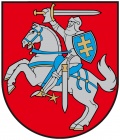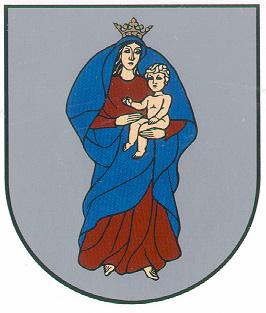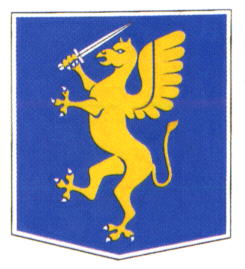Kretinga: Difference between revisions
Knorrepoes (talk | contribs) m (Text replacement - ".jpg|center]] ====Official blazon====" to ".jpg|center|Arms of {{PAGENAME}}]] ====Official blazon====") |
Knorrepoes (talk | contribs) m (Text replacement - "====Origin/meaning====" to "===Origin/meaning===") |
||
| Line 9: | Line 9: | ||
====Official blazon==== | ====Official blazon==== | ||
===Origin/meaning=== | |||
The arms were granted on June 12, 1993. | The arms were granted on June 12, 1993. | ||
Revision as of 18:32, 22 June 2017
Lithuania heraldry portal
This page is part of the Lithuania heraldry portal |
Heraldry of the World |
|
Civic heraldry:
|
Other heraldry: |
KRETINGA
County : Klaipėda
Official blazon
Origin/meaning
The arms were granted on June 12, 1993.
Kretinga received town rights in 1609 from Joannes Carolus Chodkiewics and was renamed Karolstad. At the same day the arms were granted, showing the St. Mary with Child. The St. Mary is the patron saint of the city and at the time also of the powerful Franciscan monastery in the city.
In 1621 Kretinga became a possession of the Sapieha family, who replaced the arms with an image of St. Casimir surrounded by roses. The saint was most likely chosen as the patron saint of Casimirus Sapieha. The arms remained in use until the late 18th century.
In the early 20th century both old arms were forgotten, and the new arms showed a lion. The lion was derived from the arms of the Chokiewics family. Actually the family arms showed a griffin, not a lion. In 1970 the city adopte dnew arms, showing the griffin holding a sword. These arms however were banned in the same year.
| The arms from 1970 |
After the independence of Lithuania it was decided to use the oldest known arms again.
Contact and Support
Partners:
Your logo here ?
Contact us
© since 1995, Heraldry of the World, Ralf Hartemink 
Index of the site
Literature : Rimsa, 1998













